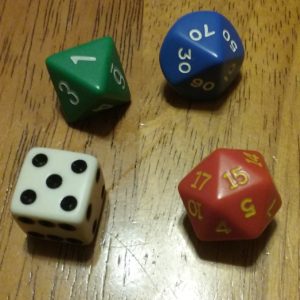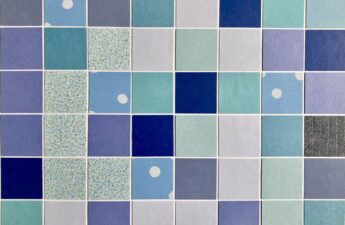This post may contain affiliate links. Please read the Disclosure Policy for details.
Dice (or number cubes) are one of my favorite things to use in math class. They are super versatile and can be used to teach and practice a ton of concepts. They also come in all sorts of different shapes and sizes, which expands the possibilities, and playing games is a great way to teach children that math is fun!
For younger children, being able to recognize quantity (without counting) by the pattern of dots on each side of a number cube is an important skill to develop. (The fancy word for this is “subitize,” and I have written about this concept here.) A super simple game is to take a six-sided number cube with dots representing one through six on each side. Roll the cube and ask the child to say the number. At first, the child may have to count each time before being able to connect the quantity (number) to the arrangement of dots. The end goal is for the child to be able to immediately know how many dots are on a side without counting.
Comparing and ordering quantities is another way to use dice for young children. Remember, the goal is to do these without counting.
- Roll two number cubes and if the numbers are the same or different.
- Roll two number cubes and ask which number is bigger (more), or smaller (less). There is also the possibility that the two numbers are equal (the same).
- Roll three or more number cubes and ask the child to put them in order from smallest (least) to largest (greatest).
Once children are beginning to learn addition, a fun way to practice this concept is to use two number cubes. Roll them at the same time (or one at a time to practice dot recognition) and ask the child to tell the total number of dots. Reinforcing the concept of addition by saying “3 and 4 is,” or 3 plus 4 is,” or “you have 3 dots, I have 4 dots, so we have 7 dots together,” is a great way to practice using math language during this game.
As children get older and learn more and more concepts, this activity can easily be extended to subtraction, multiplication, division, fractions, exponents, algebraic thinking, probability, geometry, measurement, and proportional reasoning.

These days, it’s fairly easy to find dice that have more than six sides or that have something other than the standard one through six on each side, making the possibilities for concept practice endless! For example, I have dice that only show even numbers, dice with 10 or 20 sides (these have numerals on them instead of dots), and even dice that have letters or symbols instead of numbers. With a little creativity, you can invent your own set of games that are fun to play and that teach or reinforce mathematical thinking.
A couple of great commercially available games that use dice to make math fun are Math Dice Jr., (which I write about here), Math Dice, Qwixx, and Tenzi.
Have you and your child played a great game with dice? I’d love to hear all about it in the comments!



